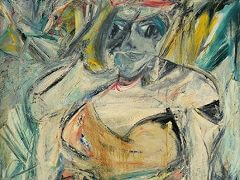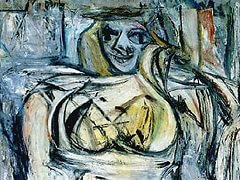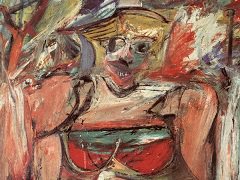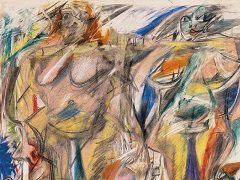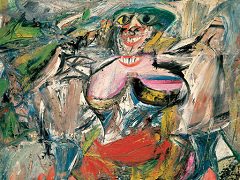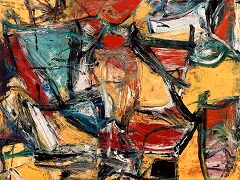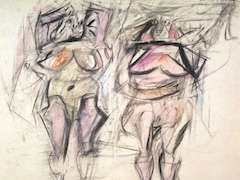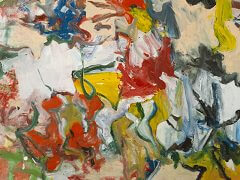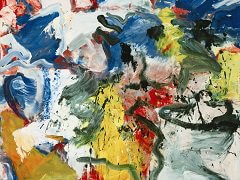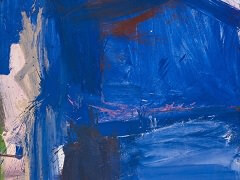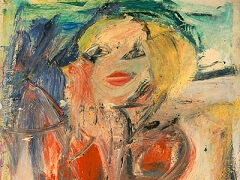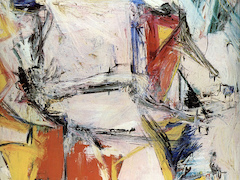Pink Angels, 1945 by Willem de Kooning
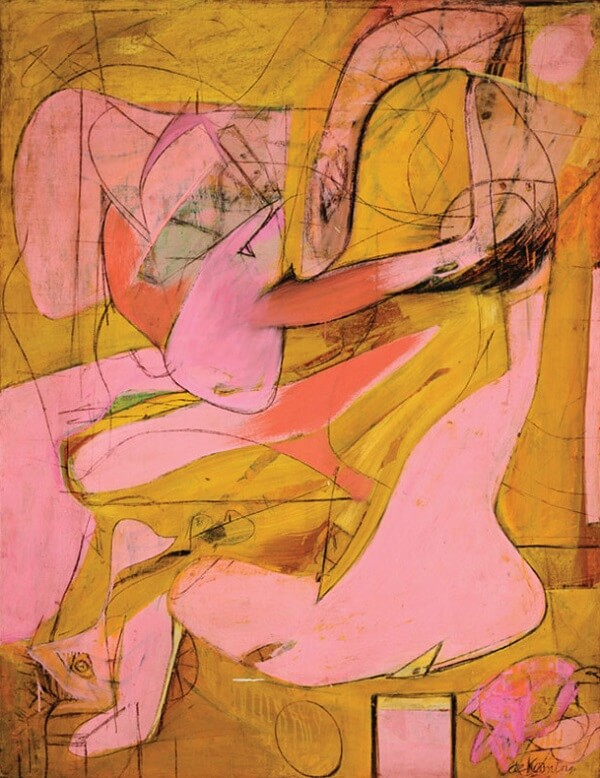
Pink Angels marked an important stage in de Kooning's evolution from figuration towards abstraction in the 1940s. The fleshy pink biomorphs of his earlier work - shapes that evoke eyes and other anatomical forms - are violently torn apart in a painting that was reportedly inspired by the carnage of World War II, and the figurative elements are barely distinguishable from the mustard yellow background. This thorough blurring of figure and ground was an important step in de Kooning's development towards the black and white paintings of the later part of the decade.
As historian and curator Judith Zilczer explains:
The growing dominance of such biomorphic figuration yielded a powerfully arresting rendition of female form in a more ambitiously scaled canvas known as Pink Angels. ... In Pink Angels, though, de Kooning has begun to use colour as an aggressive sexual sign. The high-keyed pink redolent of flesh may have echoed the seashell pink that de Kooning reportedly had used for the bedroom alcove he had built into his 22nd Street studio in preparation for his marriage to Elaine".
Yet, the piece isn't a simple bedroom fantasy. Zilczer suggests there might be a Renaissance precedent for the figures in this study. "The compositional arrangement of fragmented body imagery conjures associations with more exalted European precedents," she explains. "Scholar David Anfam has observed that the figures in Pink Angels appear akin to a close-up detail of the right section of Diana and Actaeon by Titian. Such allusions to Old Master paintings, often based on photographic reproductions, continued a studio practice that de Kooning had developed in concert with his friends and mentors, Gorky and Graham.

